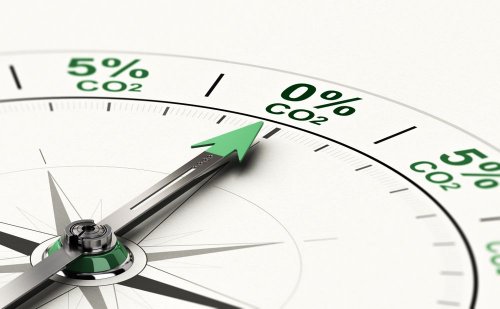Over the past 130 years, Ukrainian soils have lost about 30% of humus. Now, to ensure fertility, they are mercilessly flooded with fertilizers and pesticides, the use of which is practically not controlled. The consequences of this are erosion, pollution, acidification and salinity of the soil. At the same time, key legislative acts on land protection are being overlooked by the Ministry of Environmental Protection and Natural Resources. EcoPolitic analyzed why this happened.
What is the condition of the soils in Ukraine?
In Ukraine, fertile soils, chernozems, occupy 24 million hectares, which is 60% of all lands. Our country owns 8% of all chernozems in the world. This gives us excellent opportunities for conducting economic activities. With the right approach, we could get much better yields on our lands than most European countries. But in practice the situation is the opposite.
The level of soil plowing in Ukraine is one of the highest in Europe — 53%. For comparison, in Germany this indicator is 34%, in Poland – 36%. Plowing in itself is not a problem, the problem is in improper use and lack of soil restoration. Land owners, especially large ones, often do not observe crop rotation and grow the most profitable and most exhausting crops – sunflower, corn, soybeans — on the same plots year after year.
As a result of such management, the level of humus, which is responsible for fertility, sharply decreases in our chernozems. If virgin chernozems contain about 10% humus in the upper horizon, then the average content of humus in Ukrainian chernozem soils is 3.7-4%. According to ecologists, over the past 130 years we have lost a third of our humus. At the same time, the pace of its reproduction is 10 cm in 2 millennia!
This affects the productivity of our lands. For comparison, in 2022, the average yield of winter barley in Ukraine is 3.51 t/ha. And in Germany, this indicator for the same year was twice as much, approximately 7.5 t/ha. If we continue to deplete the soil, this difference will only increase.
In addition, depleted soils are easily eroded — they are simply blown away by the wind. This causes climate change and so-called desertification. In this case, the soil can become not only infertile, but stop producing at all.
According to approximate estimates of the National Academy of Agrarian Sciences of Ukraine, due to the deterioration of the soil, Ukraine already loses about 40 billion hryvnias per year.
War and soils
The war became an additional factor that destroys Ukrainian soil. Lands are littered with explosive substances, waste from destroyed enterprises and oil products.
As Oleksiy Vasylyuk, head of the NGO "Ukrainian Nature Conservation Group (UNCG)" previously reported in a comment to EcoPolitics, during explosions, heavy metals and sulfur remain in the soil, which turns into sulfuric acid upon contact with water. This acid destroys the microorganisms that form the soil ecosystem.
According to the calculations of the Ministry of Environment, since February 24, 2022, the spillage of 31.5 thousand tons of oil products and 2 thousand m3 of toxic substances was also recorded. This caused 19 billion hryvnias of soil damage.
A separate item of damage to the soil is the destruction by the Russian occupiers of the Kakhovskaya HPP. So far, it is difficult to calculate all the consequences of this disaster, but currently the soil irrigation system in the Kherson region is actually destroyed.
Before that, there were 426.8 thousand hectares of irrigated land in the region, or 21.6% of the total area of agricultural land. According to the calculations of the state institution "Ukrainian hydromelioration systems", from now on, irrigation in the Kherson region will be impossible for the next 2-3 years. As a result, the drought will hinder the growth of vegetation, contribute to a rise in temperature in the region and further desertification of the soil. This can put this, mainly agrarian, region on the edge of survival.
Bad management is no better than war
Interestingly, soils are polluted with oil products and poisonous compounds not only from war. They also suffer in peacetime, as a rule, due to official negligence.
For example, at the end of 2021, the Security Service of Ukraine exposed the management of "Prykarpatzakhidtrans" LLC, which specializes in the transportation of petroleum products, for large-scale land pollution in the Zakarpattia region. According to the pre-trial investigation of the SBU, at the end of 2018, this company arbitrarily began dismantling the reserve branch of the Samara – Western direction oil pipeline: it dismantled tanks and almost 33 km of pipeline.
In order to save on disposal, hazardous waste from tanks was covertly "buried" in the ground. The law enforcement officers established that almost 20,000 m² of land was contaminated with the remains of fuel and lubricant materials as a result. As a result, more than UAH 34 million in damage was caused to the ecology of the region.
But the key problem in soil protection is the use of mineral fertilizers. In the pursuit of better crops, Ukrainian fields have been generously watered with pesticides and various compounds for years. According to the State Statistics Service, from 2010 to 2021 (the latest report available), the amount of mineral fertilizers applied in Ukraine increased from 1.1 million tons to 2.6 million tons. Practically all these fertilizers were applied to agricultural crops. During these years, the use of nitrogen fertilizers increased by almost 2.2 times, potassium and phosphoric fertilizers by 2.8 times. If in 2010 the fertilized area was 70% of the total sown area, then in 2021 it will be as much as 91.5%! And 1 hectare required almost three times more fertilizers than 11 years before (the share increased from 58 to 142 kg per hectare).
Of course, fertilizers are necessary to ensure productivity in agriculture, says Anna Danylyak, an expert on environmentalization of agriculture at the NGO "Ekodiya". But approaches to their use are also important:
"Fertilizers must be used under appropriate weather conditions, the quality and composition of the soil, the topography of the area must be taken into account. Depending on these factors, the risk of non-absorption of fertilizers by plants or soil increases or decreases," she says.
Then undigested fertilizers enter water bodies, causing pollution, or gradually accumulate in the soil and destroy microflora, "acidifying" or "salinizing" it.
One of the main artificial factors of soil acidification is the thoughtless application of nitrogen fertilizers (in particular, fertilizers based on ammonium nitrate). Soil acidification occurs when nitrogen is leached rather than absorbed by crop plants. Some ammonium fertilizers also cause acidification even when the nitrogen is taken up by crops.
In addition, acid precipitation, during which sulfuric, sulfuric or nitric acid enters the soil, contributes to the increase of soil acidity. Such acid rain can be triggered by the operation of thermal power plants or large industrial enterprises that do not properly clean their emissions.
Another similar problem is soil salinization, which occurs due to the ingress of a large amount of water-soluble salts, such as sodium or potassium, into the ground. Fertility also deteriorates on saline soils, and at a certain level of salinity it can completely disappear.
In order to stop the processes of oxidation and salinization, it is necessary to look for an alternative to the use of mineral fertilizers. Such an alternative can be, in particular, the use of more environmentally friendly mineral fertilizers:
"Organic fertilizers can be an alternative, this is also stated in the so-called Nitrate Directive of the EU," says Anna Danylyak. "But organic fertilizers can also cause damage if you do not follow the technology of their formation and use. The procedure for collecting and storing waste is also regulated by the Nitrate Directive ".
European countries, in contrast to Ukraine, have long since assessed the risks of excessive use of fertilizers and have embarked on the path of reducing them. The "European Green Course" aims to reduce the use of fertilizers and plant protection products by 50-70% over the next ten years. This will reduce the level of soil pollution in EU countries. At the same time, this may also lead to the introduction of strict phytosanitary regulations in the EU to monitor the maximum residual levels of pesticides when importing agricultural products. And here Ukrainian farmers should be worried. If they plan to supply products to EU countries in the near future, it is necessary to change the approaches to management. When Ukraine becomes a full member of the European community, this requirement will be all the more mandatory for us.
What does the Ministry of Environment do to protect soils?
Unfortunately, the Ministry of Environmental Protection plays a rather episodic role in improving the soil protection system. Thus, in April 2022, the Ministry approved the Methodology for determining the amount of damage caused to land and soil as a result of emergency situations and/or armed aggression and hostilities during martial law. And this, perhaps, is the key and only step of the department in the direction of soil protection in recent times.
The most important legal acts in the field of soil protection are assigned to the Ministry of Agrarian Policy and Food. Although, it is primarily focused on the development of land management, and only then on its protection as a natural resource.
Let's start with the fact that we currently do not have a kind of basic plan for the protection of land resources. In January 2022, the Concept of the National Target Program for the Use and Protection of Land was officially approved, the customer of which was the Ministry of Agrarian Policy. According to the concept, this program had to be developed and submitted to the Cabinet within a 9-month period. But so far there is no information about its submission or consideration.
At the end of 2021, the same Ministry of Agrarian Policy submitted for discussion the draft law "On Amendments to Certain Legislative Acts of Ukraine Regarding Soil Protection and Reproduction of Their Fertility." The draft law, in particular, provided for the implementation by January 2023 of the soil condition monitoring system, the harmonization of soil quality indicators with the EU, the determination of the level of pollution and the optimal content of nutrients, the establishment of methods to prevent soil depletion, and much more. Despite the important nature protection component, we do not observe the Ministry of Environment's interest in advocating this draft law, as well as the Concept of the target program mentioned above. By the way, the draft law has not yet been submitted to the parliament.
Also important for soil protection, as we mentioned above, is the so-called Nitrate Directive – Directive 91/676/EC on the protection of waters against pollution caused by nitrates from agricultural sources. It determines the limit of nitrates in groundwater – a maximum of 50 mg per liter. This restriction serves not only to protect groundwater and drinking water, but also protects soils from too intensive application of nitrogen fertilizers. The Ministry of Environment deals with the implementation of the provisions of the Directive, and it has not yet been implemented.
Since the issue of land protection is currently under the responsibility of both the Ministry of Environment and the Ministry of Agrarian Policy, in practice there are no systematic actions in this direction. The Ministry of Agrarian Policy deals more with soil protection on a residual basis, while the Ministry of the Environment does not introduce or advocate for relevant draft laws. Meanwhile, with each agricultural season, Ukrainian soils are increasingly depleted. Even after a dozen years of such management, future generations risk inheriting not fertile black soil, but a scorched desert.





